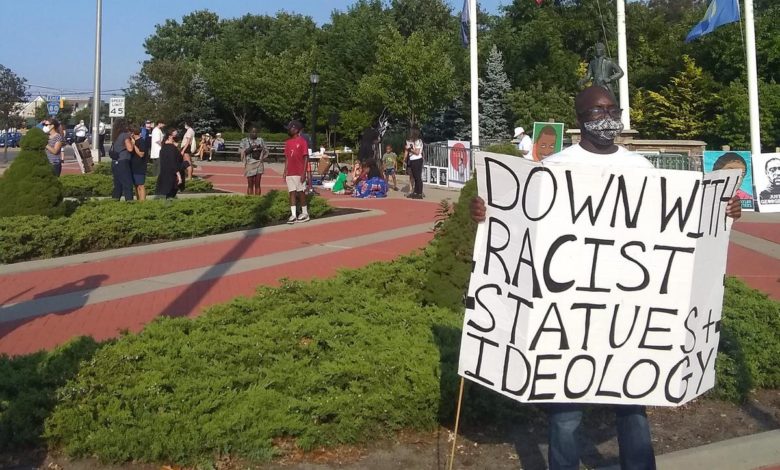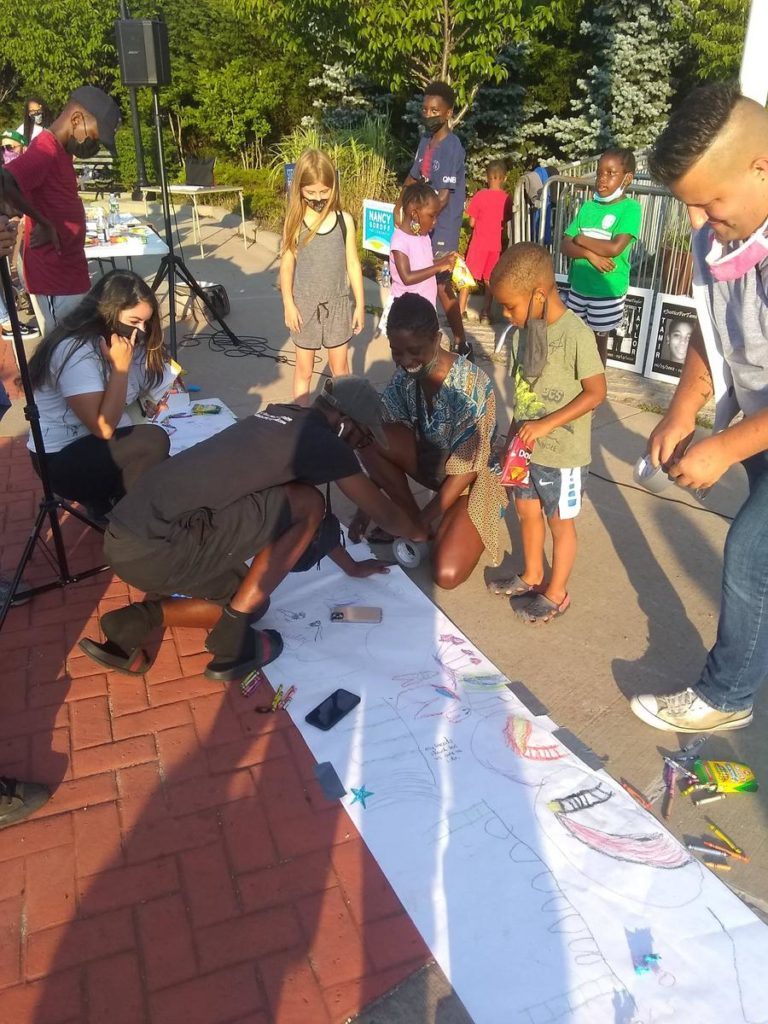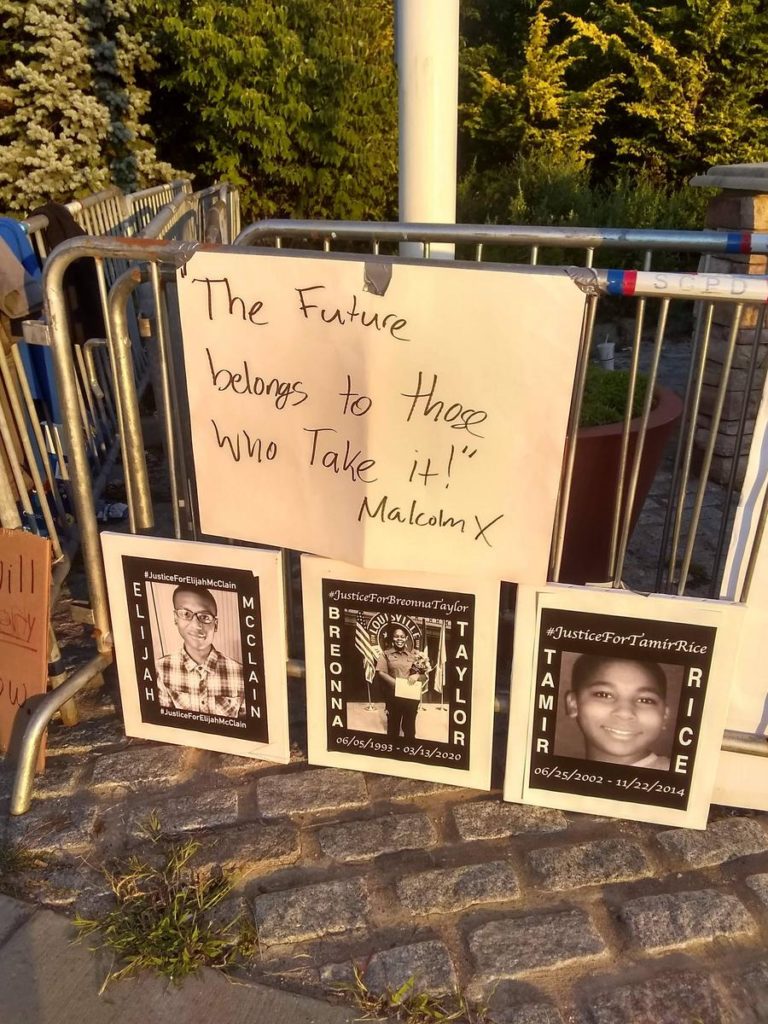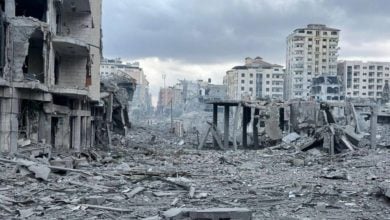
On Aug. 22, Long Island locals rallied to protest a new statue of William Floyd, racist slaveholder and signer of the Declaration of Independence. Activists held a vigil in honor of the victims of centuries of capitalist white supremacy, from the people William Floyd enslaved, to recent victims of police violence and mass incarceration, and built towards their goal of “diverse, inclusive, and equitable community.”
The action was organized by the Unkechaug Indian Nation, Suffolk Democratic Socialists of America, graduates of William Floyd high School, independent organizers from the Long Island towns of Bellport and Stony Brook, and the Party for Socialism and Liberation-Long Island. A panel discussion followed the protest in front of the statue.
The statue of William Floyd is a recent addition to the Long Island, NY, town of Shirley, having been imported from Connecticut in 2013 at a cost of $300,000. But the commemoration of a slave owner did not stop at just a statue. Adjacent to his statue is the William Floyd parkway, and nearby is William Floyd high school.
Locals of Shirley were not consulted about the statue— in fact, students of William Floyd High School are taught a watered-down version of history. One recent graduate shared his disbelief when he first learned William Floyd was a slave owner, saying it was neglected in the history he was taught.
Posters of George Floyd, Trayvon Martin, Breonna Taylor, Mike Brown, and Eric Garner, Elijah McClain and Tamir Rice were placed on the barricade surrounding the statue. Attendees chanted “Say their name–which one?” as the red-black-green of the Pan-African flag was raised on the barricades.

The space was claimed as one of joyful community. Children and artists were given the space to speak and draw visions for the space they wanted to see, such as a garden, a playground next to a zoo, and a treehouse. As music blared, children played soccer by the snack table, surrounded by a ring of protesters chanting “Black Lives Matter” by the side of the highway.
Activist Panel: Racism is a system, not just a statue
At a panel discussion that evening, a question was raised: why focus on the statue when there are so many other major problems around us? Panelists all rejected the premise of the question, saying the problem isn’t the statue, but the white supremacist system that the statue represents and is a part of.
Dr. Abena Asare, Associate Professor of Modern African Affairs and History at Stony Brook University, said that this was about reigniting public process over power: “We have a stake in this community,” she said. “You can’t make decisions about our land and community without our say so. People are being exploited, voices are not being heard, needs are not being met. It’s about public ownership, people power, and our place in this community.”
When asked what could be done to further dismantle the white supremacist infrastructure the William Floyd statue represents, Nia Adams of Justice League NYC said, “We need to have a real reckoning about our past, and not the whitewashed version of what chattel slavery was, and what stolen Indigenous land was. It’s something we gloss over in a few pages in a textbook, and we don’t talk about the atrocity that it was and continues to be today in the ways it’s maintained in our society. There is no freedom for Black, Brown, and Indigenous people under capitalism.”
There was open discussion on how the statue was demeaning to Black and Indigenous communities, and how it should be replaced with an empowering icon, for example, a Chief of the Unkechaug Indian Nation.

Ezekial, 2017 graduate of William Floyd High School and current senior at SUNY Binghamton, soon to be Masters of Science in Human Rights, said: “I was 12 when Trayvon Martin was murdered. I was 15 when Timothy Loehmann shot and killed Tamir Rice. I am now 21, studying human rights and fighting for a more equitable America for my six nieces and nephews to grow up in.
“I pledge to you all that I’ll continue stirring up good trouble for my lifetime so that maybe my children won’t need to protest racial inequality. I urge you all to make your own pledge to fight for basic human rights. The rights to healthcare, shelter, and food so that no one must live in poverty; workers’ union right and above all the right to live. Pledge to expose injustice and eradicate it wherever it resides. Pledge to fight state sanctioned violence, pledge to stir up good trouble.”
The event closed with a candlelight vigil to honor the memory of those lost to the white supremacist, capitalist state, from those subjugated by William Floyd and his compatriots, to the lives lost today by police terror.






